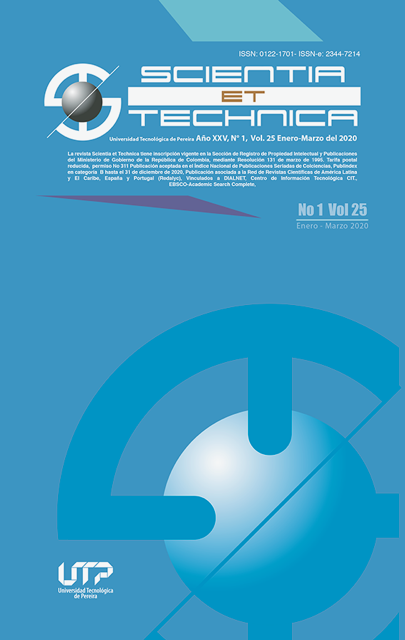Solution of series-parallel photovoltaic arrays model using global optimization algorithms
DOI:
https://doi.org/10.22517/23447214.22361Keywords:
Global optimization, Partial Shading, Photovoltaic Arrays, Series-ParallelAbstract
Models of series-parallel (SP) photovoltaic (PV) arrays focus on the system of nonlinear equations that represents the array’s electrical behavior. The solution of the system of nonlinear equations can be posed as an optimization problem and solved with different methods; however, the models do not formulate the optimization problem and do not evaluate different optimization algorithms for its solution. This paper proposes a solution, using global optimization algorithms, of the mathematical model that describes the electrical behavior of a SP generator, operating under uniform and partial shading conditions. Such a model is constructed by dividing the generator into strings and representing each module in the string with the single-diode model. Consequently, for each string a system of nonlinear equations is build applying the Kirchhoff’s laws, where the unknowns are the modules’ voltages. The solution of the resulting nonlinear equation system is posed as an optimization problem, where the objective function is defined as the sum of the squared of each nonlinear equation. Minimum and maximum values of each voltage are defined from the datasheet information of the modules and bypass diodes. As a demonstrative example, we arbitrarily select two well-known algorithms to solve this problem: Genetic Algorithms and Particle Swarm Optimization. Simulation results show that both algorithms solve the optimization problem and allow the reproduction of the generator’s characteristic curves. Moreover, the results also indicate that the optimization problem is correctly defined, which opens the possibility explore other optimization algorithms to reduce the computation time.
Downloads
Downloads
-
Vistas(Views): 1065
- PDF Descargas(Downloads): 514
Published
How to Cite
Issue
Section
License
Copyrights
The journal is free open access. The papers are published under the Creative Commons Attribution / Attribution-NonCommercial-NoDerivatives 4.0 International - CC BY-NC-ND 4.0 license. For this reason, the author or authors of a manuscript accepted for publication will yield all the economic rights to the Universidad Tecnológica of Pereira free of charge, taking into account the following:
In the event that the submitted manuscript is accepted for publication, the authors must grant permission to the journal, in unlimited time, to reproduce, to edit, distribute, exhibit and publish anywhere, either by means printed, electronic, databases, repositories, optical discs, Internet or any other required medium. In all cases, the journal preserves the obligation to respect, the moral rights of the authors, contained in article 30 of Law 23 of 1982 of the Government Colombian.
The transferors using ASSIGNMENT OF PATRIMONIAL RIGHTS letter declare that all the material that is part of the article is entirely free of copyright. Therefore, the authors are responsible for any litigation or related claim to intellectual property rights. They exonerate of all responsibility to the Universidad Tecnológica of Pereira (publishing entity) and the Scientia et Technica journal. Likewise, the authors accept that the work presented will be distributed in free open access, safeguarding copyright under the Creative Commons Attribution / Recognition-NonCommercial-NoDerivatives 4.0 International - https://creativecommons.org/licenses/by-nc-nd/4.0/deed.es license.



